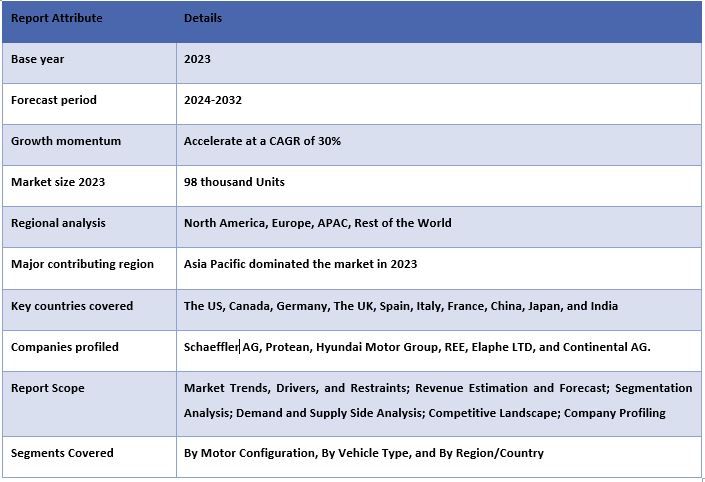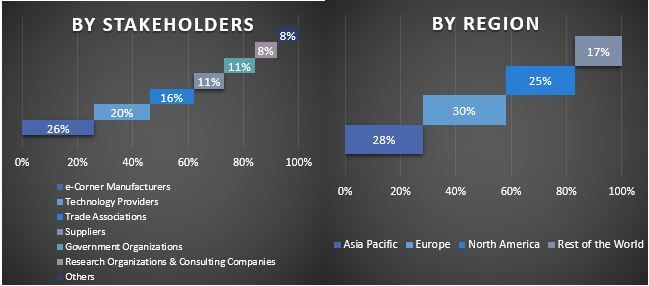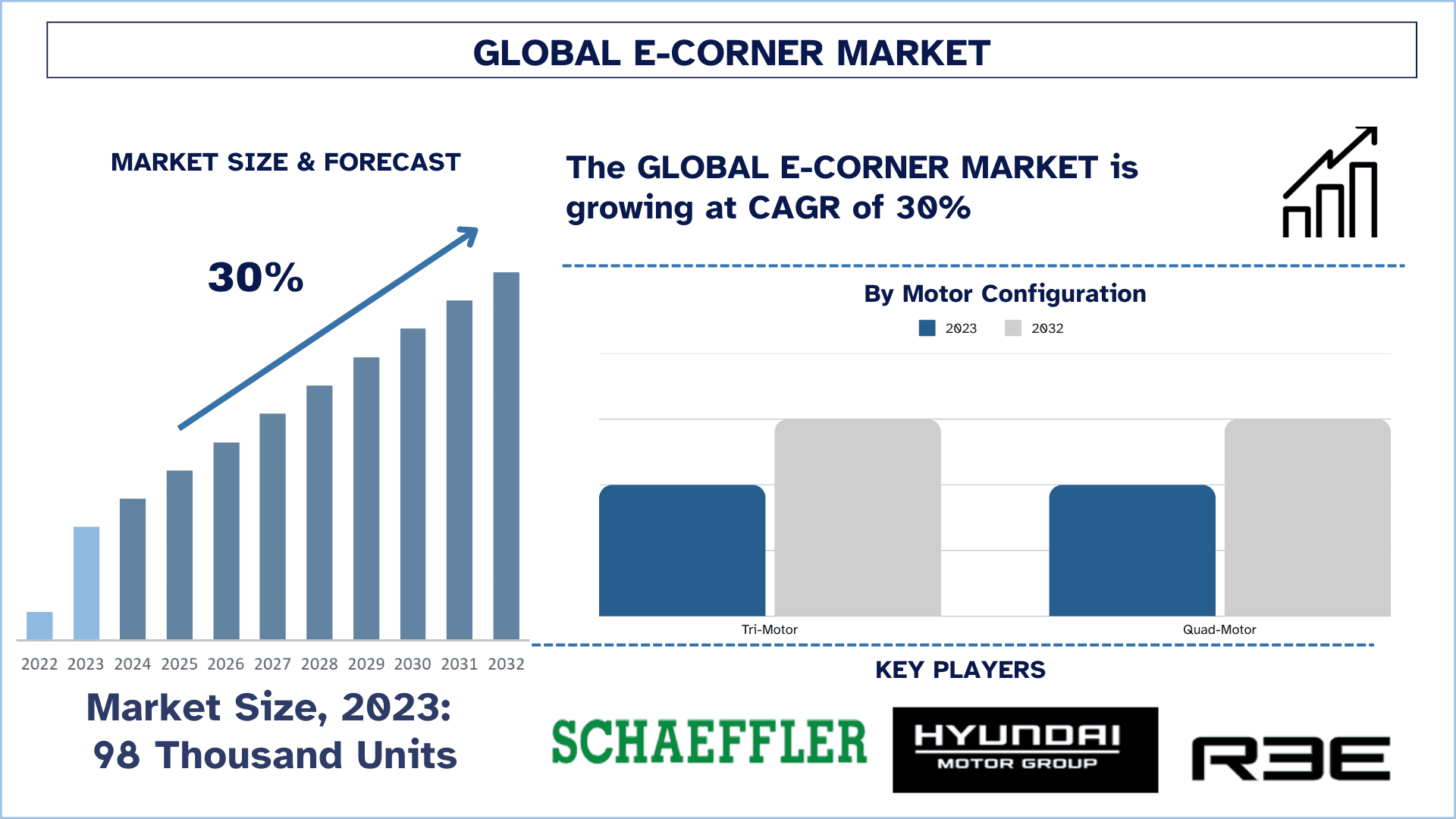
e-Corner 市场规模与预测
2023年,e-corner 市场估值为 9.8 万台,预计在预测期内(2024-2032 年)将以约 30% 的强劲复合年增长率增长,这主要得益于对电动和自动驾驶汽车的需求不断增长,以及城市化和智慧城市计划的推动。
e-Corner 市场分析
e-Corner 市场在预测期内正以强劲的增长率增长。新兴技术有能力改变原始设备制造商和经销商的汽车行业。其中一种变革被称为 e-Corner,它得到了电动汽车日益普及的支持。e-corner 市场一直是车辆自由度的一个范式转变因素,并给汽车的设计、生产、服务和运营带来了重大变化。直到现在,前进和后退驾驶以及左右方向的运动是汽车的限制。然而,借助 e-corner 系统(未来移动性的核心技术),运动和驾驶的条件发生了变化;蟹行驾驶可以左右移动,或者在原地形成 360° 旋转的维度。这种复杂的移动可以通过下一代技术实现,该技术将驱动、制动、转向和悬架系统作为车辆每个车轮的组件组合在一起。E-corner 系统可用于移动解决方案,例如进出市中心的班车、机器人出租车、物流车辆和通勤车辆.
e-Corner 市场趋势
人工智能赋能的 E-Corner 系统
e-Corner 技术已被采用,以融入人工智能的驱动力,例如自适应驾驶动态和预测性维护。人工智能赋能的集成系统用于改善实时决策、优化电力消耗,并允许在复杂的城市环境中进行无声导航。例如,大陆集团推出了一种集成了转向的前轮应用,以提高车辆在城市中行驶时的操控性和适应性。电动角模块是提高电动汽车效率、可维护性和机动性的最有效系统之一,因为它在一个紧凑的设计中包含了所有主要组件:一个带有可调节空气弹簧的纵臂悬架、一个水平安装的减震器、一个电动、集成式轮毂电机和一个干式制动系统,所有这些都位于车辆的角上。ECM 最棒的地方在于它节省空间,并结合了更少的复杂单元,轮毂电机是另一个例子。但仅仅是将轮毂电机纳入其中,他们的能量损失问题进一步说明他们有一个精细的设计。这使得该机制充当没有减速齿轮的电机。通过优化电机运行范围,可以在 WLTP 测试周期中产生高达 20% 的效率。
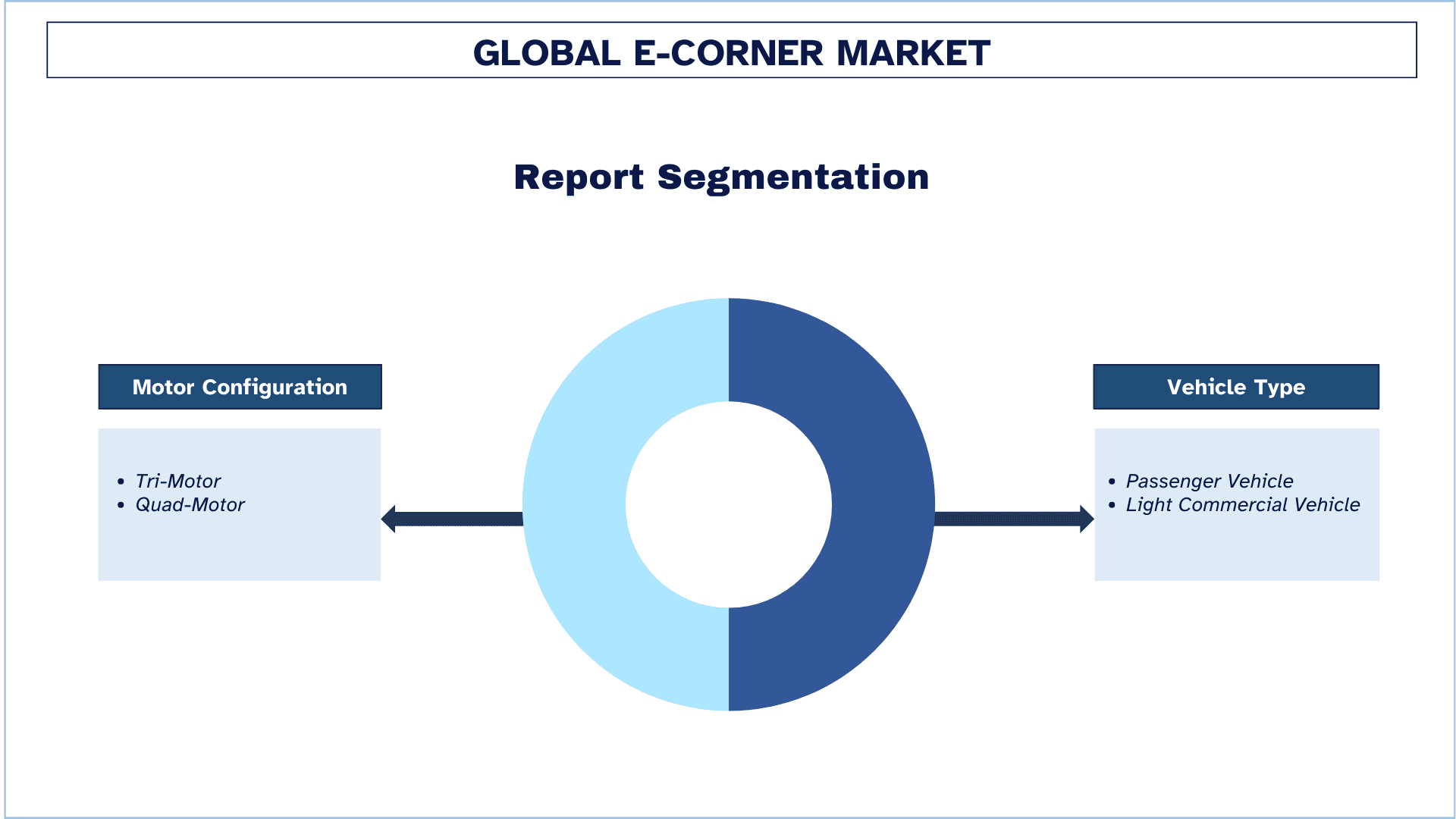
亚太地区主导 e-Corner 市场。
亚太地区(APAC)不仅主导了整个 e-corner 市场,而且在整个预测期内也成为领跑者。这是因为该地区正在快速城市化,并且越来越多地采用电动汽车 (EV),再加上该地区强大的汽车制造生态系统,以及一些促进清洁和智能移动的政府举措,从而支持了这种市场主导地位。该地区 e-Corner 市场的增长主要受到豪华车中对电动角模块日益增长的需求的推动,例如,仰望 U8 和 U9,它们是基于比亚迪的 e4 平台开发的。亚太地区在采用电动角模块方面处于领先地位,其中中国、韩国和日本等国家在这种技术带来的转型中发挥着根本性的作用。现代摩比斯等领先的 e-corner 制造商将其 e-corner 模块集成到现代 IONIQ 5N 和即将推出的 IONIQ 7 等车辆中。此外,其他中国公司也在将电动角模块引入轻型车辆,适用于可操作的电动轻型商用车和自动驾驶交付系统。
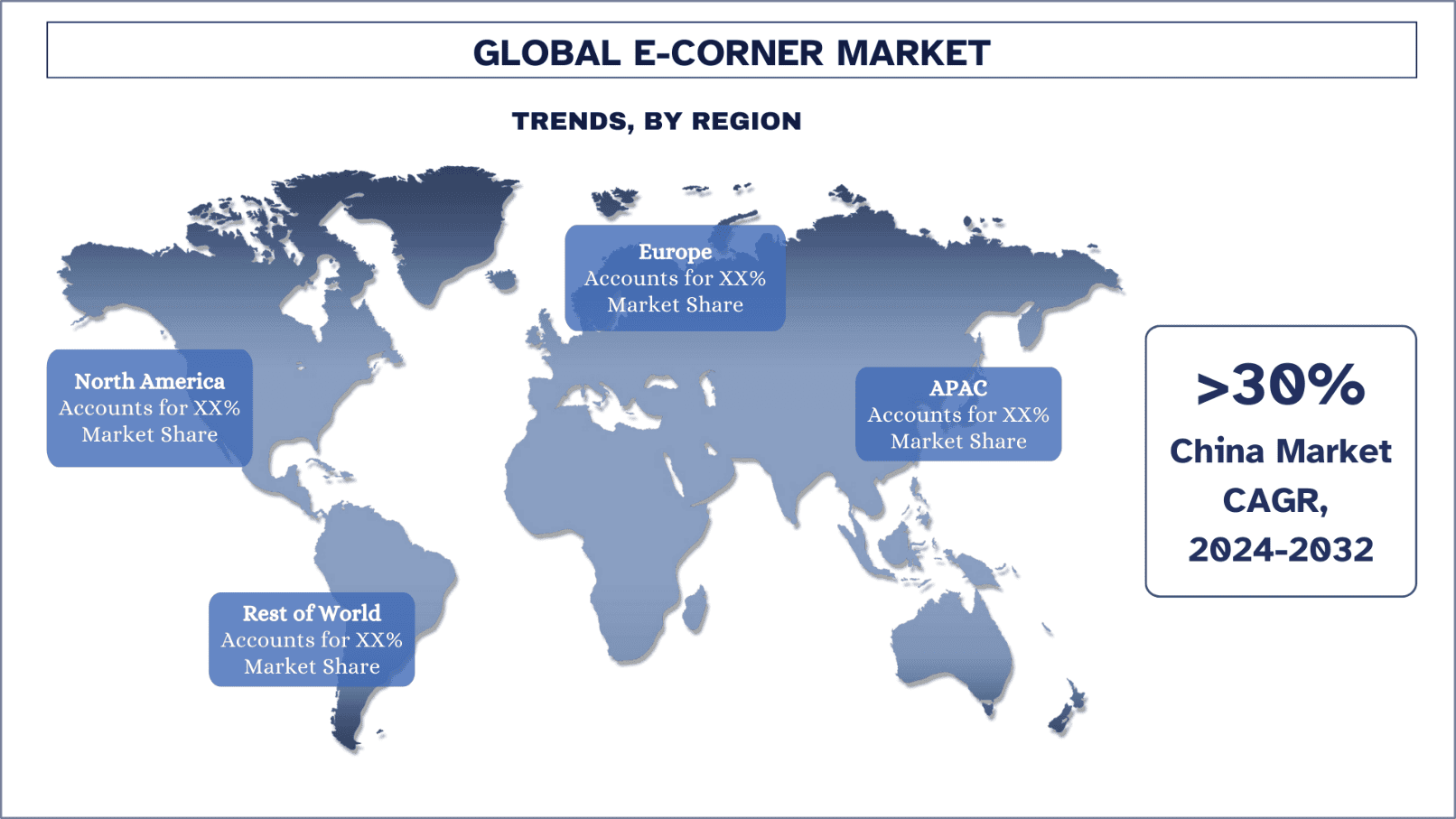
e-Corner 行业概览
e-corner 市场竞争激烈且集中,参与者很少,主要为全球和国际性企业。主要参与者正在采取不同的增长战略来增强其市场地位,例如合作伙伴关系、协议、合作、新产品发布、地域扩张以及兼并和收购。市场上运营的一些主要参与者包括舍弗勒股份公司、Protean、现代汽车集团、REE、Elaphe LTD 和大陆集团。
e-Corner 市场新闻
2024 年 1 月,现代摩比斯宣布已成功将下一代 e-corner 模块集成到原型车中。该模块将四个关键功能(转向、制动、驱动和悬架)集成到每个车轮中,从而可以实现 90 度旋转和横向行驶。这项创新可以实现零转弯停车和蟹行移动,非常适合城市环境和狭窄的停车位。现代摩比斯计划在 2025 年前将该技术商业化,目标客户是电动汽车 (EV) 制造商和城市交通初创企业。
e-Corner 市场报告覆盖范围
购买本报告的理由:
该研究包括由经过认证的主要行业专家验证的市场规模和预测分析。
该报告简要概述了整个行业的整体表现。
该报告深入分析了主要的行业同行,主要关注关键业务财务、产品组合、扩张战略和最新发展。
详细考察了行业中普遍存在的驱动因素、制约因素、主要趋势和机遇。
该研究全面涵盖了不同细分市场的市场。
深入的行业区域层面分析。
定制选项:
全球 e-corner 市场可以根据要求或任何其他市场细分进行进一步定制。除此之外,UMI 了解您可能拥有自己的业务需求,因此请随时与我们联系以获取完全满足您要求的报告。
目录
e角市场分析(2024-2032年)的研究方法
分析历史市场、评估当前市场以及预测全球e角市场的未来市场是创建和分析全球主要地区e角采用情况所采取的三个主要步骤。 进行了详尽的二级研究,以收集历史市场数据并估算当前市场规模。 其次,为了验证这些见解,考虑了许多发现和假设。 此外,还与全球e角市场价值链中的行业专家进行了详尽的初步访谈。 通过初步访谈对市场数据进行假设和验证后,我们采用了自上而下/自下而上的方法来预测完整的市场规模。 此后,采用市场细分和数据三角剖分方法来估计和分析行业相关细分和子细分市场的市场规模。 详细方法如下所述:
历史市场规模分析
第 1 步:深入研究二级来源:
进行了详细的二级研究,通过公司内部来源(如年度报告和财务报表、业绩演示、新闻稿等)以及外部来源(包括期刊、新闻和文章、政府出版物、竞争对手出版物、行业报告、第三方数据库和其他可信出版物)获取e角的历史市场规模。
第 2 步:市场细分:
在获得e角市场的历史市场规模后,我们进行了详细的二级分析,以收集主要地区不同细分和子细分市场的历史市场洞察和份额。 报告中包含的主要细分市场包括电机配置和车辆类型。 此外,还进行了国家层面的分析,以评估该地区测试模型的总体采用情况。
第 3 步:因素分析:
在获得不同细分和子细分市场的历史市场规模后,我们进行了详细的因素分析,以估算e角当前的当前市场规模。 此外,我们使用因变量和自变量(如电机配置和e角市场的车辆类型)进行了因素分析。 对需求和供应方情景进行了彻底分析,考虑了全球e角市场领域的顶级合作、并购、业务扩张和产品发布。
当前市场规模估算与预测
当前市场规模:基于以上3个步骤的可行见解,我们得出了当前的市场规模、全球e角市场的关键参与者以及各细分市场的市场份额。 所有必需的百分比份额划分和市场细分均使用上述二级方法确定,并通过初步访谈进行了验证。
估算与预测:对于市场估算和预测,权重被分配给不同的因素,包括驱动因素和趋势、限制以及利益相关者可获得的机会。 在分析了这些因素之后,应用了相关的预测技术,即自上而下/自下而上的方法,以得出2032年全球主要市场不同细分和子细分市场的市场预测。 用于估算市场规模的研究方法包括:
行业的市场规模,以(千台)为单位,以及国内主要市场e角市场的采用率
市场细分和子细分的所有百分比份额、划分和细分
全球e角市场中的关键参与者,就所提供的产品而言。 此外,这些参与者为在快速增长的市场中竞争而采取的增长战略。
市场规模和份额验证
初步研究:与主要地区的高级意见领袖 (KOL)(包括高层管理人员(CXO/VP、销售主管、营销主管、运营主管、区域主管、国家主管等))进行了深入访谈。 然后总结了初步研究结果,并进行了统计分析以证明所陈述的假设。 初步研究的输入与二级研究结果相结合,从而将信息转化为可操作的见解。
不同地区的主要参与者划分
市场工程
采用数据三角剖分技术来完成整体市场估算,并得出全球e角市场每个细分和子细分的精确统计数据。 在研究了全球e角市场中电机配置和车辆类型领域的各种参数和趋势后,数据被分成几个细分和子细分。
全球e角市场研究的主要目标
该研究指出了全球e角市场的当前和未来市场趋势。 投资者可以获得战略见解,从而根据研究中进行的定性和定量分析来决定投资。 当前和未来的市场趋势决定了区域层面市场的整体吸引力,从而为行业参与者提供了一个利用未开发市场以从先行者优势中受益的平台。 研究的其他定量目标包括:
分析e角市场当前和预测的市场规模(以规模(千台)为单位)。 此外,分析不同细分和子细分市场的当前和预测市场规模。
研究中的细分包括电机配置和车辆类型领域。
定义和分析e角的监管框架
分析涉及各种中介机构的价值链,以及分析行业的客户和竞争对手行为。
分析主要地区e角市场当前和预测的市场规模。
报告中研究的主要国家包括亚太地区、欧洲、北美和世界其他地区
e角市场的公司简介以及市场参与者为在快速增长的市场中维持发展而采取的增长战略。
对行业进行深入的区域层面分析
常见问题 常见问题
Q1: 电子角市场目前的市场规模和增长潜力是什么?
2023年,电子角阀市场估值为9.8万台,预计在预测期内(2024-2032年)将以30%的复合年增长率增长。
Q2:推动电子角模块市场增长的驱动因素有哪些?
电动汽车日益普及、自动驾驶汽车需求不断增长以及城市化进程加快和智慧城市计划的推进,是推动电子角模块市场发展的主要因素。
问题3:哪个细分市场按电机配置划分拥有最大的电驱动桥市场份额?
按配置类型划分,四电机细分市场占据最大的电子角模块市场份额。
第四季度:电子角落市场有哪些新兴技术和趋势?
人工智能赋能的电子角系统是电子角市场的重要趋势之一。
Q5:哪个地区将主导电子角落市场?
预计在预测期内,亚太地区将主导市场。
相关 报告
购买此商品的客户也购买了

